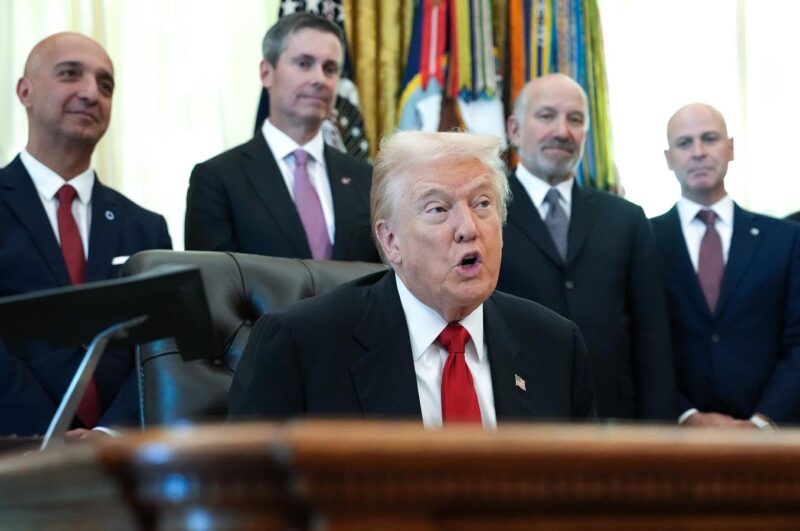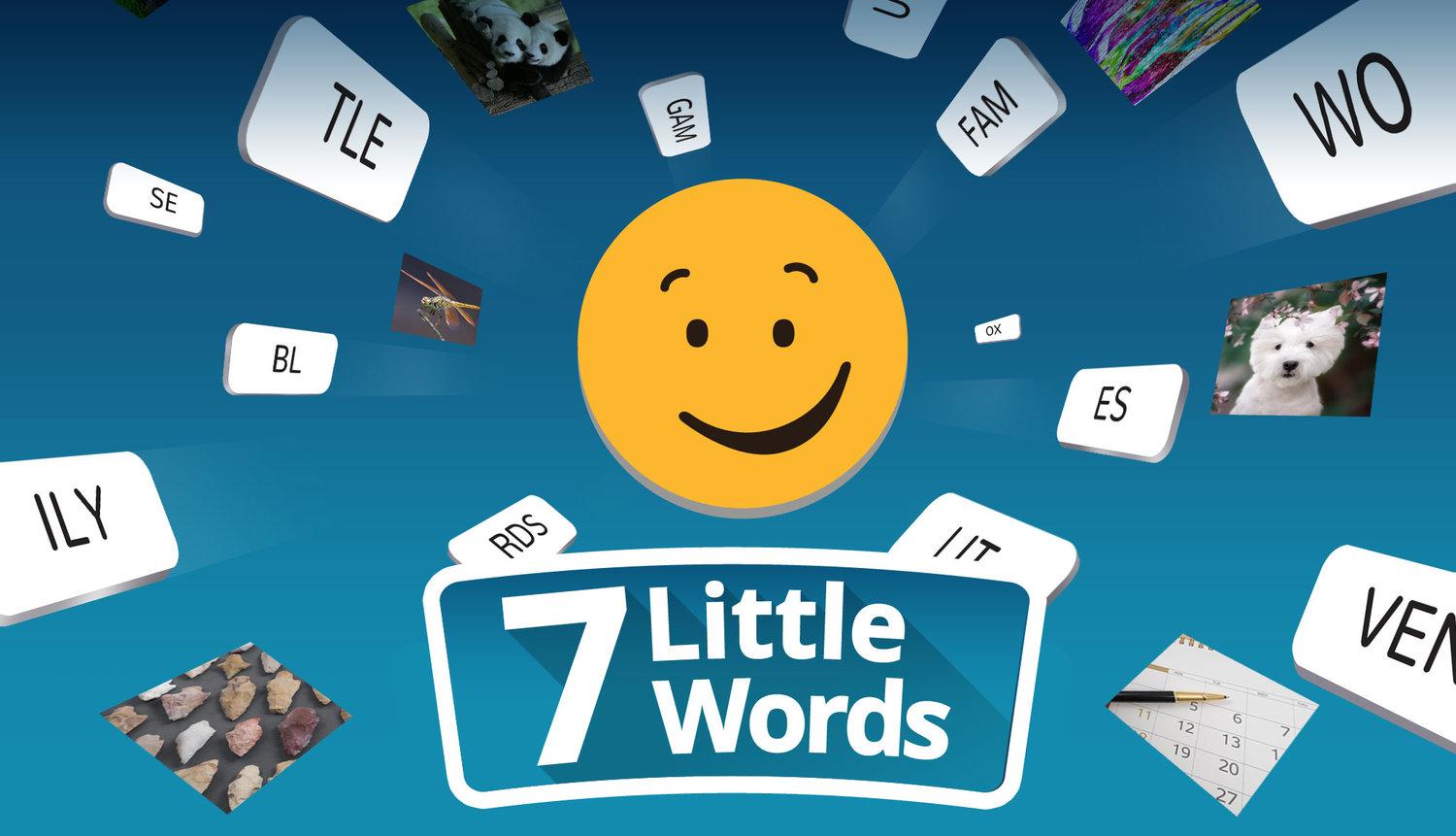WASHINGTON, DC – NOVEMBER 6: U.S. President Donald Trump, joined by members of the pharmaceutical industry and administration officials, delivers remarks on lowering drug prices in the Oval Office at the White House. Trump announced that his administration has reached agreements with drugmakers Eli Lilly and Novo Nordisk that would lower the price of some GLP-1 weight loss medications on the soon-to-launch TrumpRx platform as well as the public programs, Medicare and Medicaid. But details remain unclear. (Photo by Andrew Harnik/Getty Images)
Getty Images
President Trump announced today that his administration has reached agreements with drug manufacturers Novo Nordisk and Eli Lilly on lowering the price of certain weight loss medications on the soon-to-launch TrumpRx platform as well as in the public programs Medicare and Medicaid. However, key details remain unclear.
The glucagon-like peptide-1 drugs, including blockbusters Zepbound (tirzepatide) and Wegovy (semaglutide), will be sold directly to patients starting in Jan. 2026 through the administration’s new TrumpRx online portal, at prices starting on average at $345 a month. These prices are projected to come down to $250 by 2028. The website will direct patients to drugmakers’ direct-to-consumer platforms, where some of their products will be available at a discount for cash-paying patients, say, in the deductible phase of their insurance, or those who are not insured (either no health insurance at all, or not insured for obesity medicines).
What’s noteworthy is the $345 figure for a month’s supply of these products is not a most-favored nation price, despite it being claimed as such. As defined by the Trump administration in May of this year, such a price would qualify as the lowest price among a set of nations with at least 60% of the U.S.’s gross domestic product per capita. However, while there’s a considerable range in terms of out-of-pocket costs for European patients, significantly lower prices are available in comparator countries for the products in question.
Nevertheless, the prices announced by the Trump administration are lower than what’s currently offered in the U.S. direct-to-consumer market, namely maintenance doses sold by pharmaceutical manufacturers to patients at $499 for a month’s supply. However, for patients with insurance coverage, their monthly co-payments are already likely less than $100, which means that for them TrumpRx won’t have any impact.
The companies have agreed to sell the treatments for $245 a month to Medicaid and Medicare, while Medicare beneficiaries will have a $50 co-payment. Given the announcement of the $245 figure to be charged to public insurers in Medicaid and Medicare, is this then also the Medicare’s so-called maximum fair price negotiated for semaglutide-based products—Ozempic, Rybelsus and Wegovy—under the Inflation Reduction Act’s drug pricing provisions? If this is the case, this price is supposed to go into effect in Jan. 2027. But the White House says that $245 will apply by the middle of 2026. Further, Trump administration officials reiterated that the agreed-upon $245 is separate from the still undisclosed IRA-negotiated price.
As an aside, Novo Nordisk said on Wednesday it had agreed a maximum fair price for Medicare under the IRA negotiations for its semaglutide-based products. While the company did not disclose the price, in an investor call yesterday Novo Nordisk hinted that it would only have a slightly negative impact on sales.
If the IRA-negotiated price is indeed separately calculated (and probably higher than the $245 number), then perhaps the $245 figure will apply in Medicare through a Center for Medicare and Medicaid Innovation pilot program. Importantly, STAT News reports that in reference to today’s White House briefing, Novo Nordisk said that Medicare coverage for weight loss will be enabled through a pilot program. Presumably this is the same one announced three months ago by the Trump administration. These demonstration projects are often voluntary, that is, plans have the option whether to participate. Furthermore, such pilots are always temporary, unlike the permanent feature of laws like the IRA.
And, administration officials said that under the agreements, Medicare and Medicaid will extend coverage to patients with obesity “at high metabolic or cardiovascular risk” which is defined as patients with a body mass index greater than 27 with prediabetes and established cardiovascular disease; with a BMI over 30 and uncontrolled hypertension despite treatment, advanced kidney disease or heart failure; with BMI greater than 35.
Apart from the last patient group with BMI greater than 35 and not necessarily any co-morbidities, the White House announcement makes no mention of a change for those who are obese but have no co-morbidities where coverage is currently not permitted. It’s therefore unclear whether the expansion of coverage is substantive or relatively incremental. Many of the patients belonging to the categories above already meet current Medicare coverage conditions. Since last year, Medicare has covered the weight-loss formulations of GLP-1 products under its Part D (outpatient) drug program if beneficiaries had a separate Food and Drug Administration-approved indication. In the case of Wegovy, overweight or obese patients with preexisting cardiovascular disease who are prescribed the drug to prevent the risk of heart attacks or strokes may get Medicare coverage. The operative word here, however, is “may.” Plans can cover it, but don’t have to. Similarly, plans may cover Ozempic for overweight or obese patients who have chronic kidney disease. But they’re not obligated to. Likewise, it seems that coverage by Part D plans will be optional under the Trump administration plan.
Roughly 28% of state Medicaid agencies already offer coverage of weight loss drugs, with beneficiaries paying nominal out-of-pocket costs of at most $3 per prescription. It’s unclear how the Trump administration plan would expand access for Medicaid beneficiaries, unless the thinking is that the lower net prices would induce this. But Medicaid plans already achieve substantial price cuts through a federally mandated rebate and supplemental discounts.
What’s in it for Novo Nordisk and Eli Lilly? Well, a tariff reprieve as well as priority review vouchers (a pass to faster regulatory reviews of drug candidates), in addition to the (limited) increase in Medicaid and Medicare coverage.
The deals with Novo Nordisk and Eli Lilly are just the latest in the Trump administration’s efforts to lower drug prices. STAT News reported last month that Astra Zeneca agreed to provide the Medicaid program with discounted drug prices, supposedly in line with what it offers other comparably wealthy countries. This was similar to the deal President Trump made with Pfizer in September and EMD Serono in October. Additionally, the firms say they will launch newly approved drugs at most-favored nation prices. In exchange, the administration will grant the companies reprieves on pharmaceutical tariffs.
How much impact this will have on various stakeholders in the pharmaceutical supply chain and patients, remains to be seen. All of the deals thus far have been declared confidential which obviously makes them hard to assess. What makes it even murkier is that what has been released to the public raises more questions than answers.









